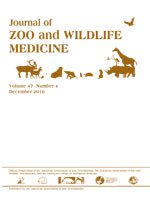The purple-spined sea urchin (Arbacia punctulata) is commonly found in shallow waters of the western Atlantic Ocean from the New England area of the United States to the Caribbean. Sea urchins play a major role in ocean ecology, echinoculture, and biomedical research. Additionally, sea urchins are commonly displayed in public aquaria. Baseline parameters were developed in unanesthetized urchins for righting reflex (time to regain oral recumbency) and spine response time to tactile stimulus. Tricaine methanesulfonate (MS-222) was used to sedate and anesthetize purple-spined sea urchins and assess sedation and anesthetic parameters, including adhesion to and release from a vertical surface, times to loss of response to tactile stimulus and recovery of righting reflex, and qualitative observations of induction of spawning and position of spines and pseudopodia. Sedation and anesthetic parameters were evaluated in 11 individuals in three circumstances: unaltered aquarium water for baseline behaviors, 0.4 g/L MS-222, and 0.8 g/L MS-222. Induction was defined as the release from a vertical surface with the loss of righting reflex, sedation as loss of righting reflex with retained tactile spine response, anesthesia as loss of righting reflex and loss of tactile spine response, and recovery as voluntary return to oral recumbency. MS-222 proved to be an effective sedative and anesthetic for the purple-spined sea urchin at 0.4 and 0.8 g/L, respectively. Sodium bicarbonate used to buffer MS-222 had no measurable sedative effects when used alone. Anesthesia was quickly reversed with transfer of each individual to anesthesia-free seawater, and no anesthetic-related mortality occurred. The parameters assessed in this study provide a baseline for sea urchin anesthesia and may provide helpful comparisons to similar species and populations that are in need of anesthesia for surgical procedures or research.
How to translate text using browser tools
1 December 2016
TRICAINE METHANESULFONATE (MS-222) SEDATION AND ANESTHESIA IN THE PURPLE-SPINED SEA URCHIN (ARBACIA PUNCTULATA)
Jeffrey R. Applegate,
Daniel S. Dombrowski,
Larry Shane Christian,
Meredith P. Bayer,
Craig A. Harms,
Gregory A. Lewbart
ACCESS THE FULL ARTICLE
Anesthesia
Arbacia punctulata
MS-222
purple-spined sea urchin
sedation
tricaine methanesulfonate





